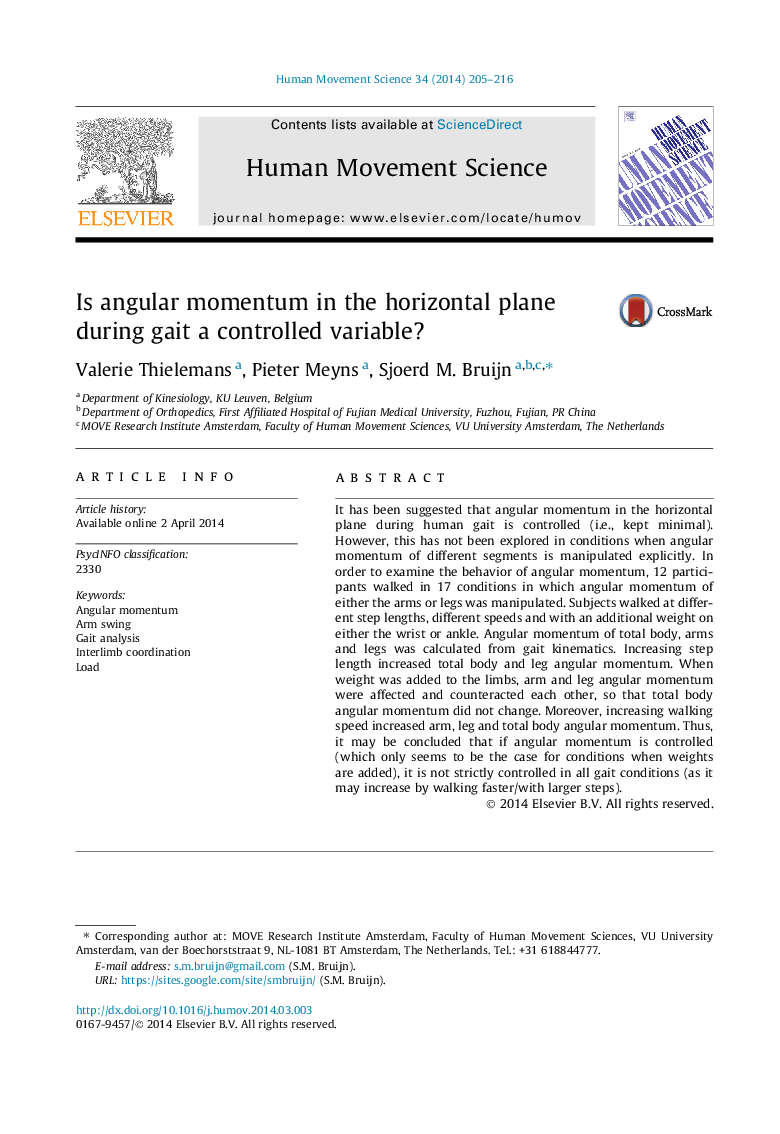| Article ID | Journal | Published Year | Pages | File Type |
|---|---|---|---|---|
| 928424 | Human Movement Science | 2014 | 12 Pages |
•Angular momentum about the vertical is suggested to be a controlled variable in gait.•We tested this by manipulating angular momentum generated by different limbs.•Adding weights to the wrist or ankle did not increase total body angular momentum.•Walking faster, or with larger steps, increased total body angular momentum.•Thus, angular momentum does not appear to be controlled in all situations.
It has been suggested that angular momentum in the horizontal plane during human gait is controlled (i.e., kept minimal). However, this has not been explored in conditions when angular momentum of different segments is manipulated explicitly. In order to examine the behavior of angular momentum, 12 participants walked in 17 conditions in which angular momentum of either the arms or legs was manipulated. Subjects walked at different step lengths, different speeds and with an additional weight on either the wrist or ankle. Angular momentum of total body, arms and legs was calculated from gait kinematics. Increasing step length increased total body and leg angular momentum. When weight was added to the limbs, arm and leg angular momentum were affected and counteracted each other, so that total body angular momentum did not change. Moreover, increasing walking speed increased arm, leg and total body angular momentum. Thus, it may be concluded that if angular momentum is controlled (which only seems to be the case for conditions when weights are added), it is not strictly controlled in all gait conditions (as it may increase by walking faster/with larger steps).
